BY LETTER
Aristotle (Delta Pavonis)
Galactography > Regions of Space > Inner Sphere
Galactography > Systems and Worlds > Systems & Worlds A - B
Galactography > Systems and Worlds > Systems & Worlds A - B
The Aristotle System, location of the life-bearing world Darwin | |
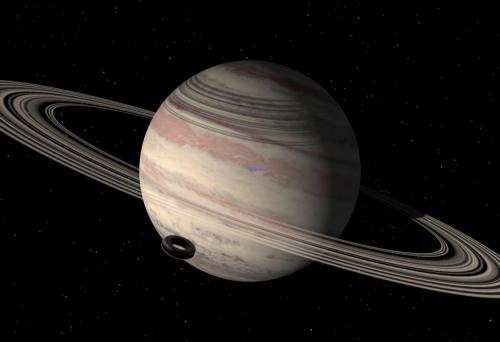 Image from Steve Bowers | |
| Wallace, a Mesojovian gas giant in this system, with a significant population of modosophonts inhabiting bubblehabs. Nearby can be seen the small rotating habitat known as Grommit | |
Delta Pavonis (Aristotle) Data Panel | |
| Star | Names: Delta Pavonis, Aristotle |
|---|---|
| Physical characteristics | - Mass: 1.971E+30 kg (0.991 x Sol) - Radius: 848,754 km (1.22 x Sol) - Luminosity: 1.323 x Sol (bolometric) - Temperature: 5,604 Kelvin - Spectral type: G8IV - Age: 9.3 billion years |
| Distance from Sol | 19.128 ly (10600 AT) |
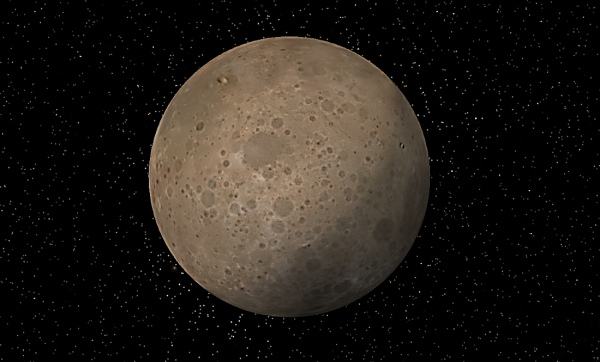 Image from The Astronomer and Steve Bowers | |
| Pasteur, a Hermean (Mercury-like) world in this system | |
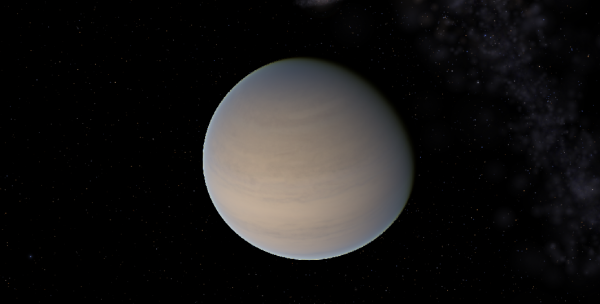 Image from The Astronomer | |
| Huxley, a microjovian world (a small gas giant) in this system | |
Worlds in the Aristotle System | |
| Pasteur | (named after Louis Pasteur) Semimajor Axis 0.247 AU: Orbital Period 0.123 standard years: Type Hermean: Mass 0.163 x Earth: Radius 3466.3km |
|---|---|
| Lamarck | (named after Jean-Baptiste Lamarck) Semimajor Axis 0.488 AU: Orbital Period 0.342 standard years: Type Hermean: Mass 0.263 x Earth: Radius 4028.9km |
| Linnaeus | (named after Carl Linnaeus) Semimajor Axis 0.789 AU: Orbital Period 0.704 standard years: Type Arean: Mass 0.148 x Earth: Radius 3727.4km |
| Darwin | (named after Charles Darwin) Semimajor Axis 1.148 AU: Orbital Period 1.236 standard years: Type EuGaian garden world: Mass 2.018 x Earth: Radius 6942.9km More information here. Has 1 moon - Wedgwood: Radius 1672.2 |
| Mendel | (named after Gregor Mendel) Semimajor Axis 1.624 AU: Orbital Period 2.079 standard years: Type Arean terraformed to EuGaian: Mass 0.591 x Earth: Radius 5491.1km |
| Humboldt | (named after Alexander von Humboldt) Semimajor Axis 2.321 AU: Orbital Period 3.552 standard years: Type Selenian: Mass 0.051 x Earth: Radius 2968.7km |
| Wallace | (named after Alfred Russel Wallace) Semimajor Axis 4.616 AU: Orbital Period 9.958 standard years: Type MesoJovian: Mass 260.5 x Earth: Radius 69966.1km Has 43 moons, named after evolutionary scientists from Old Earth |
| Huxley | (named after Thomas Henry Huxley) Semimajor Axis 7.539 AU: Orbital Period 20.792 standard years: Type MicroJovian: Mass 46.36 x Earth: Radius 49604.5km. Has 11 moons, named after Nobel prizewinners from Old Earth |
| Harvey | (named after William Harvey) Semimajor Axis 15.367 AU: Orbital Period 60.51 standard years: Type Neptunian: Mass 10.11 x Earth: Radius 22640.6km. Has 8 moons, named after medical scientists from Old Earth |
| Leeuwenhoek | (named after Antonie van Leeuwenhoek) Semimajor Axis 24.679 AU: Orbital Period 123.2 standard years: Type Neptunian: Mass 10.11 x Earth: Radius 24233.4km. Has 4 moons, named after microbiologists from Old Earth |
| Carson | (named after Rachel Carson) Semimajor Axis 44.968 AU: Orbital Period 302.9 standard years: Type LithicGelidian: Mass 0.001 x Earth: Radius 1091.8km. |
| Hooke | (named after Robert Hooke) Semimajor Axis 166.358 AU: Orbital Period 2155 standard years: Type CryoNeptunian (scattered into eccentric, highly inclined orbit): Mass 6.035 x Earth: Radius 19063.5km. Deeper Covenant colony |
| Habitats | The Origen Band around Darwin; Empedocles and Pliny, McKendree Cylinders in Mendel L4 Lagrange point |
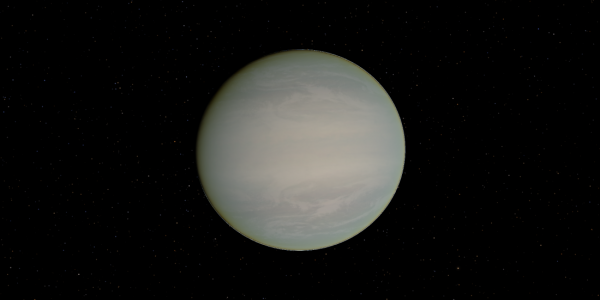 Image from The Astronomer | |
| The Neptunian world Harvey | |
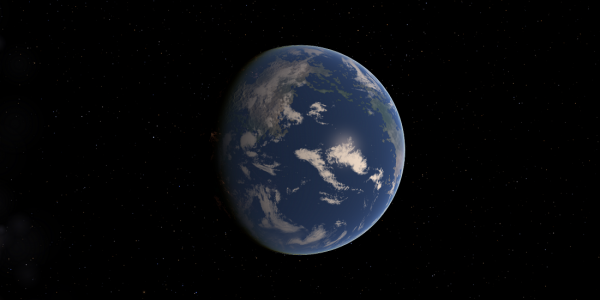 Image from The Astronomer | |
| Mendel, a Mars-like world which has been terraformed and is now one of the main centres of population in this system | |
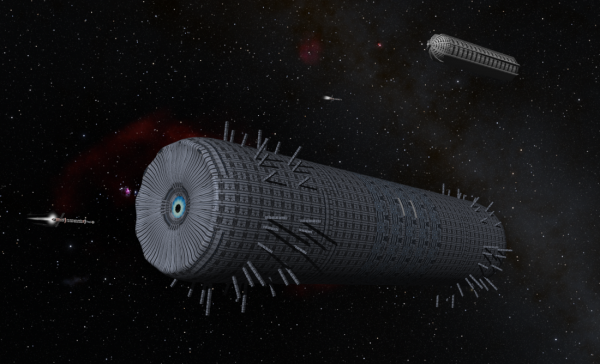 Image from Steve Bowers | |
| The relatively new McKendree cylinder known as Empedocles is eight thousand kilometres long, while the older cylinder known as Pliny is only five thousand km in length. | |
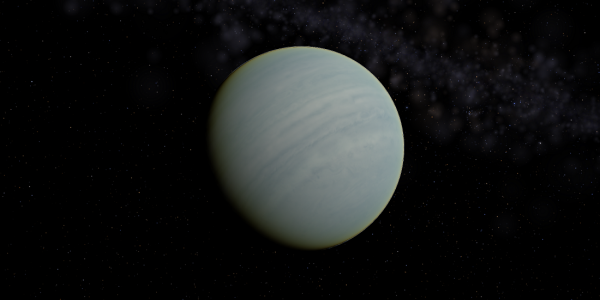 Image from The Astronomer | |
| The Neptunian world Leeuwenhoek | |
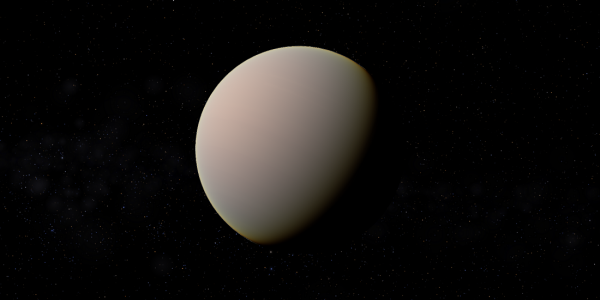 Image from The Astronomer | |
| Hooke is a an ice giant orbiting far out among the Kuiper Belt of this system, and has close ties with the local Hiders and Backgrounder population | |
Related Articles
Appears in Topics
Development Notes
Text by M. Alan Kazlev
Updated by The Astronomer and Steve Bowers (march 2020)
Initially published on 09 October 2001.
Updated by The Astronomer and Steve Bowers (march 2020)
Initially published on 09 October 2001.






